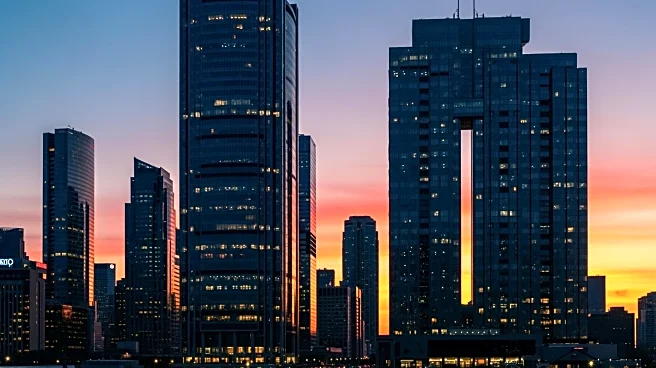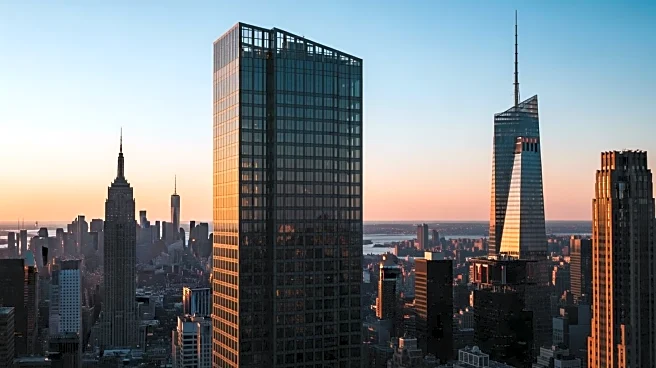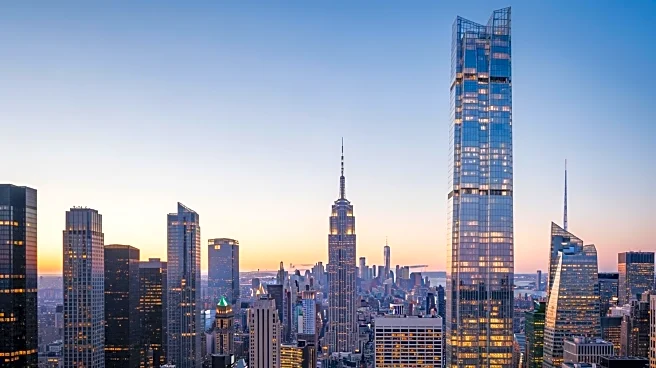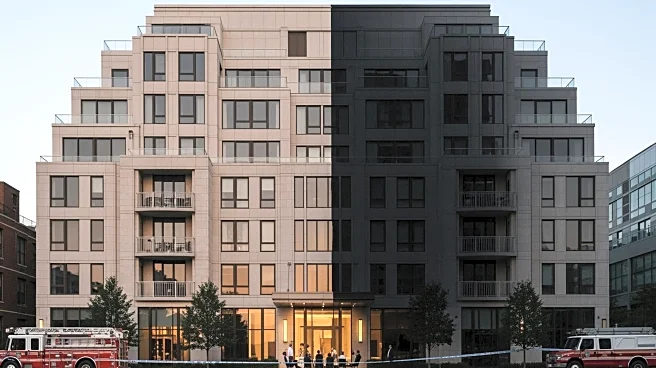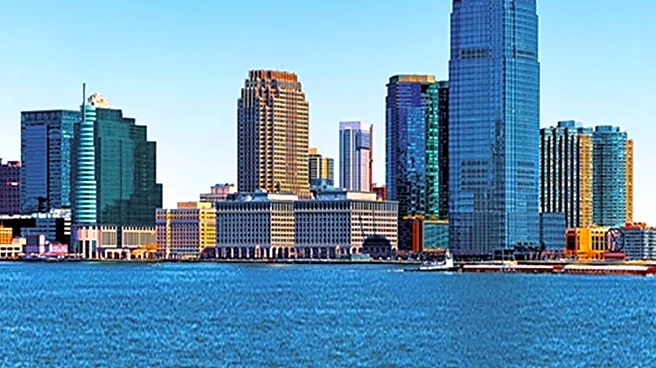What's Happening?
Manhattan's commercial real estate market has experienced a significant resurgence, with property sales reaching nearly $5 billion in the latest quarter. This marks the highest single-quarter sales since
early 2022. The increase is largely attributed to the return of balance-sheet lenders, including traditional banks and insurers, who had previously been absent from the market. Notable transactions include the $1.08 billion purchase of 590 Madison Avenue by RXR and Elliott Investment Management, and the $160 million sale of the former Brooks Brothers Madison Avenue site to SL Green. The office sector alone accounted for $3.3 billion of the total sales, nearly doubling the activity from the previous quarter and showing a 74% increase compared to the same period last year.
Why It's Important?
The resurgence in Manhattan's commercial real estate transactions is a positive indicator for the broader economic recovery post-pandemic. The return of institutional investors and balance-sheet lenders suggests renewed confidence in the high-quality office sector. This trend could lead to increased investment and development in the area, potentially boosting local employment and economic activity. Established institutional owners like SL Green, RXR, and Vornado are now the dominant buyers, indicating a shift from private capital to more stable, long-term investments. This could stabilize the market and encourage further growth.
What's Next?
The continued energy in the investment-sale market suggests that Manhattan's commercial real estate sector may see sustained growth. As investor confidence builds, more transactions are likely to occur, potentially leading to further development and revitalization of the area. However, the market will need to navigate potential changes in government policies and economic conditions. Stakeholders will be watching for any shifts that could impact the market's trajectory.
Beyond the Headlines
The resurgence of Manhattan's commercial real estate market could have broader implications for urban development and economic policy. As the market stabilizes, there may be increased pressure on city planners and policymakers to address infrastructure and zoning issues to accommodate growth. Additionally, the shift from private capital to institutional investors could influence the types of projects that are prioritized, potentially affecting the city's landscape and economic diversity.
